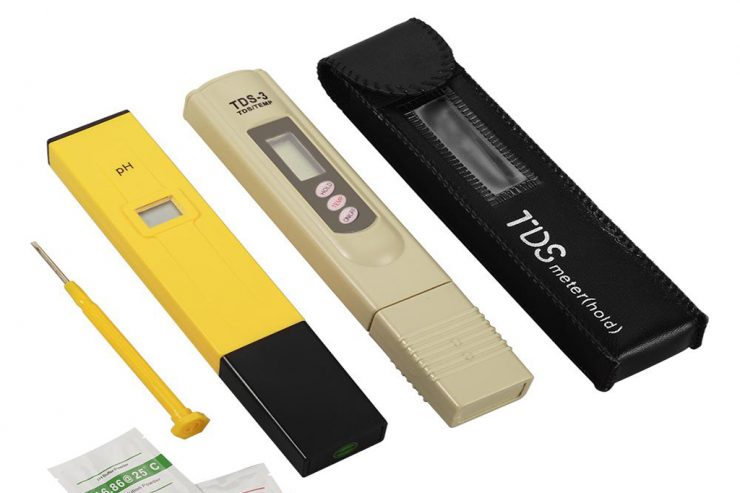Understanding Reverse Osmosis and Totally Dissolved Solids Readings.
You will use your totally dissolved solids meter to test the water often throughout the reverse osmosis water making process. This informs you weather the reverse osmosis watermaker is working as intended and whether the water is suitable for drinking or not.
A TDS meter indicates the Total Dissolved Solids (TDS) of a solution, i.e. the concentration of dissolved solids in it. Since dissolved ionized solids such as salts and minerals increase the conductivity of a solution, a TDS meter measures the conductivity of the solution and estimates the TDS from that.
Dissolved organic solids such as sugar and microscopic solid particles such as colloids, do not significantly affect the conductivity of a solution so a TDS meter does not include them in its reading.
A TDS meter typically displays the TDS in parts per million (ppm). For example, a TDS reading of 1 ppm would indicate there is 1 milligram of dissolved solids in each litre of water.
A slightly elevated total dissolved solids (TDS) concentration is not a health hazard. The TDS concentration is a secondary drinking water standard and therefore is regulated because it is more of an aesthetic rather than a health hazard. Water with a TDS reading between 800 and 1200 may begin to have a bitter taste; water with a TDS reading of ≥4000ppm will taste salty. Water taste is a personal preference. The World Health Organisation recommends a TDS reading of ≤500ppm.
An undamaged membrane removes all pathogens and cysts, so when using fresh water as the water source there is no requirement to test the water other than out of interest. When using sea or brackish water as source water we use the TDS meter to test how much totally dissolved solids remain in the fresh water to ensure that an adequate amount have been removed.
Sea water has an initial TDS reading of approximately 36,000ppm, (this is above the testing range of your TDS meter), and we recommend that before you send water to your tanks that the TDS reading should be ≤500ppm.
Water Classifications
• Fresh water < 1,000 mg/L TDS
• Brackish water 1000 to 10,000 mg/L TDS
• Saline water 10,000 to 30,000 mg/L TDS
• Brine (Sea water) > 30,000 mg/L TDS


